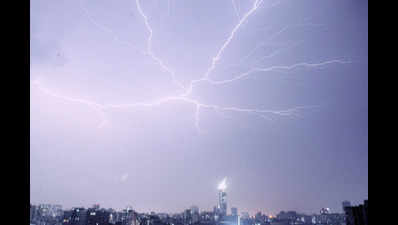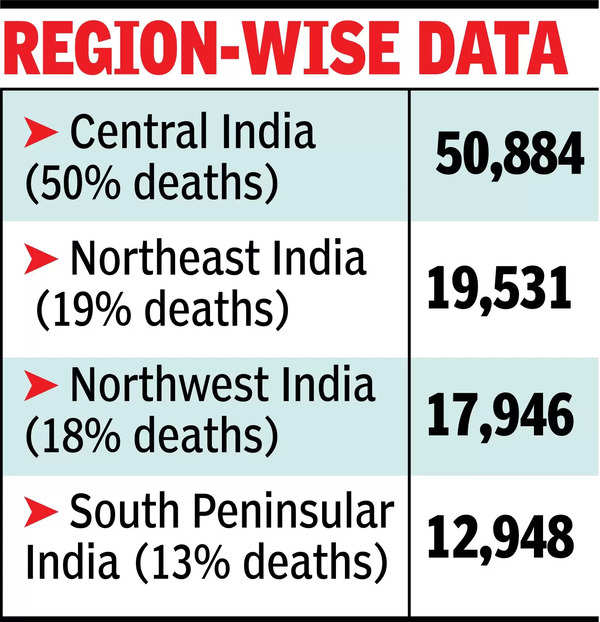
HYDERABAD: There is an alarming rise in deaths due to lightning throughout the country between 2010 and 2020. And climate change-induced extreme weather can only trigger more deaths.
A team of researchers led by Fakir Mohan University, BalasoreOdisha, study National Crime Records Bureau data to find that lightning caused 1,01,309 deaths between 1967 and 2020, with the number of victims increasing between 2010-2020. The data shows an annual average increase. fatality each state and Union Territory from 38 during 1967-2002 to 61 between 2003-2020. The study was published in the journal “Environment, Development and Sustainability”.

“The data shows that an average of 1,876 deaths are reported (in the country) every year,” said Prof Manoranjan Mishra of the university’s geography department, who authored the study “Lightning-related Fatalities in India (1967-2020): A Detailed Overview Patterns and Trends”. “Increasing frequency and intensity of lightning strikes due to worsening climate conditions is increasing,” he told TOI.
According to the data, almost a third of the deaths – 29,804 – have occurred between 2010 and 2020. The first four decades registered 71,505 deaths.
early warning systemsafe infrared key to reduce lightning deaths: Study
Hyderabad: Central and northeast India recorded the highest incidence of lightning deaths, according to a study. Data shows that central India alone accounted for 50,884 (50%) deaths.
The study was conducted by researchers led by Fakir Mohan University, Balasore, Odisha. Lightning, although a common natural phenomenon, especially during the monsoon season, is less talked about, Professor Manoranjan Mishra of the university’s geography department said, stressing that climate-induced extreme events are witnessing an increasing trend in India.
He attributed the increase in lightning strikes to environmental degradation, climate changeregional variability, high population exposure, geographic and climatic diversity, inadequate early warning systems and socio-economic factors.
The study is intended to shed light on the reasons behind the increasing pattern of lightning deaths and contribute to the development of effective lightning protection systems, policies. Prof. Mishra also said significant changes observed in central India, northwest India and the southern peninsula of India can be attributed to several interconnected factors.
Citing how the US, Australia and Latin America deal with lightning-related disasters, he said: “We can also prevent lightning deaths with better awareness and education. We need to have early warning systems and lightning-safe infrastructure. in research and data collection and community engagement are key.”
The study explains that developing countries like India are well prepared for storms, floods, and droughts, but are ill-equipped to deal with lightning and heat waves. The study, published in the journal, ‘Environment, Development and Sustainability’, said the Northeast, which has experienced changes in rainfall patterns, temperature and extreme weather, has also experienced lightning events due to massive deforestation, depletion. of water bodies, global warming.
Prepare a lightning action plan: NDMA to the state
At National Disaster Management Agency has directed states and Union territories to prepare a flash action plan.
However, only seven of the 36 states and union territories have come up with such plans so far. The most vulnerable states, including Telangana, MP, Odisha, Bihar and Bengal have not prepared such an action plan, researchers said.




